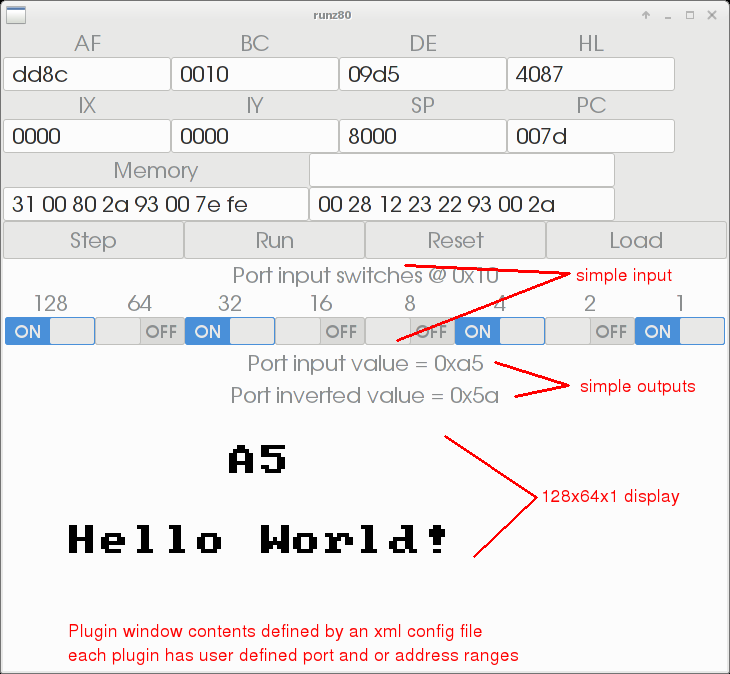This at the moment it is little more that a minimal front end to libz80, while there are other z80 IDE's I'm developing this for intellectual exercise. Its main feature will be to have the ability to use devices provided by plugins.
The idea is that each plugin instance will have its own configuration that will define what memory area (and/or IO ports) its responsible for
The user will then be able to "build" their own Z80 system by including and defining which devices (plugins) and how they are attached.
requires gtk3 pkg-config z88dk libz80
http://nightly.z88dk.org/z88dk-latest.tgz https://github.com/ggambetta/libz80
extract z88dk to this directory clone libz80 to this directory
./runz80 machine1.xml
will load a machine that will allow you to run hello-input.bin
You should see Hello World! scrolling down the screen if you change the value of the 8 bit switches, the hex value is displayed in the top left of the display
example machine config
The following config is using two plugins, simpleIn is used once, and simpleOut is used twice so the machine has three devices...
the user specifies the first port for the device (the plugin knows how many ports it needs!)
<machine name="machine1">
<plugin
libName="simpleIn"
label="input switches"
portStart="0x10" />
<plugin
libName="simpleOut"
label="input value"
portStart="0x12" />
<plugin
libName="simpleOut"
label="inverted value"
portStart="0x14" />
</machine>
having a "machine" like this you might use it with the following z80 code
org 0
loop:
in a,(0x10) # simpleIn plugin port
out (0x12),a # simpleOut port
cp 0x80
jr z, done
cpl # invert
out (0x14),a # the other simpleOut port
jr loop
done:
halt
in addition to the simpleIn and simpleOut plugin there is also kBuffer which provides 1KB of bit pattern monochrome display, giving a luxurious 128x64x1 stunning display ability. In addition to the 1kb of memory mapped interface (for the display bitmap) there is also a single port used, any value written to this port will result in the actual display being updated from the memory. This allows the whole image to be rendered into the memory but only refreshed once its ready to be displayed.
